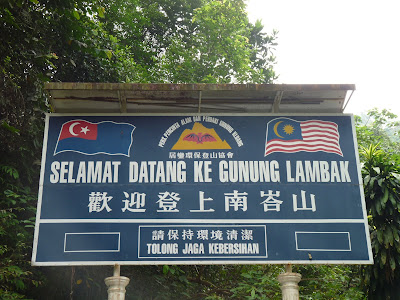Monday, July 1, 2013
西巴丹岛: SIPADAN
Tuesday, September 21, 2010
Taiwan 2010


History
In the 16th century, Portuguese ships sailed to Southeast Asia and discovered Taiwan. Sailors aboard these ships were enchanted by the island's natural beauty and majestic scenery. They exclaimed: "Ilha Formosa!" -- "beautiful island" in Portuguese, and the name has become synonymous with Taiwan ever since.
Environment
People in Taiwan enjoy a free, democratic, and safe society, and international students usually find that it is easy to live and study in Taiwan. Taiwanese pride themselves on their hospitality, and are committed to creating a friendly and convenient living environment for you to study Mandarin Chinese and experience Chinese and indigenous cultures.
Most people in Taiwan speak basic English, are very willing to help new friends from afar. Even if you have just begun to learn Mandarin Chinese, you will have no problem obtaining the information and assistance you require.
Geography
Taiwan is located off the southeastern coast of China, at the western edge of the Pacific Ocean, between Japan and the Philippines. The Central Mountain Range divides the east and west coasts and stretches from north to south. A wonderful variety of geo-graphical contrasts exist: mountains, hills, plateaus, plains, basins and coastline, all in which a diversity of unique flora and fauna thrive.
With Japan to the north, China to the west, and the Philippines to the south, Taiwan has always been a location of strategic maritime importance since ancient times. It has played an important role in the development of Asia as well as world history, politics and trade. As a result, Taiwan now enjoys a high level of openness and cultural diversity.
Society and Culture
Taiwan's geographical and historical uniqueness has given rise to a diversity of ethnic groups, cultures, and languages. There are also 380,000 people who belong to twelve officially recognized indigenous tribes, each with its own social structure, language, and cultural traditions.
Taiwan has a population of 23 million people who still observe their culture and still speak regional Mandarin Chinese dialects in addition to Mandarin..
click Below !!!
Photo A Picture 1-1000
Photo B Picture 1001-1624
Sunday, January 31, 2010
Wednesday, January 27, 2010
Tanjung Piai Trip
Tanjung Piai


Tanjung Piai is also known as “The Southernmost Tip of Mainland Asia”. Tanjung Piai is named after this fern locally known as ‘Paku Piai’. It is a type of fern that can live in saline conditions. Tanjung Piai is also home to many species of mangrove plants and species of animals. Tanjung Piai State Park (Ref: 1289) wetland designated on 31/01/03; 526 ha; 01°16′N 103°31′E is a State Park consisting of coastal mangroves and intertidal mudflats.
According to Wetlands International, Johor holds 28.7% of mangrove forest in Peninsular Malaysia (27,733 ha) or 4.7% of total mangrove forest cover in Malaysia. Tanjung Piai covers 526 hectares of Mangroves and another 400 hectares of inter tidal mudflats. Mudflats are soft and muddy soil. It has high salt content and low oxygen levels (anaerobic). However, they are subject to hot and dry conditions.
Mangroves gazetted as Mangrove Forest Reserves (MFR) in Johor are managed by the State Forestry Department. Mangroves gazetted as National Parks and RAMSAR sites by the State Government of Johor are managed by Johor National Parks Corporation (JNPC)
It forms the only mangrove corridor that connects Pulau Kukup and the Sungai Pulai wetlands. Five rivers dissect the Tanjung Piai State Park.The mangrove in this State Park is a typical example of a Rhizophora apiculata-Bruguiera cylindrica dominated coastal forest.The mudflats however are extensive, namely at the southern-most tip of Tanjung Piai. Five species of large water birds and 7 species of shorebirds were seen to be feeding on these mudflats. The mangroves of Tanjung Piai have been conserved in the past for the protection of the shoreline, as the immediate hinterlands are all cultivated farmlands.
Bunds were created along the west and east coasts of Tanjung Piai to protect farmlands from being inundated by salt waters. Tidal currents heavily erode Tanjung Piai with the coastal mangrove fringes being reduced to 50m at certain stretches. The Tanjung Piai State Park is home to about 20 ‘true’ mangrove plant species as well as 9 more mangrove-associated species, which demonstrates high species diversity in such a small area.
Saturday, May 2, 2009
Gunung Lambak


Gunung Lambak is a 510m high hill found in the town of Kluang, Johor. This hill can be seen clearly from the town with its prominent twin peaks. Usually, Singaporeans give this hill a miss as there is an even higher hill, Gunung Belumut (1010m) which is half an hour away. However, this hill is suitable who trekkers who only want to go on a short, leisurely day hike. This hill is also easily accessible by local transport.
Due to its close proximity to the town, there are playgrounds at the foothill. During the weekends, it is common to see locals trekking on the hill as a family. Food stalls sprung out from the side of the road and numerous cars occupied the car park. Some children would be playing in the murky waters of the man-made pool while others would prefer the cleaner stream. There are also toilets at the foothill. The toilets look clean and constructed with wood to blend with the surrounding. However, entering the toilet and the sight and smell of ill-maintenance is obvious. The construction of the toilet is not completed at the inside. Sinks are left without taps and toilet bowl without flushing system.
For most trekkers, it would only take an hour of trek up the prominent trail to reach the left-summit. There is a tar road for the initial part of the trek. Wooden steps soon replaced the tar road as the route steepens. Ropes are tied to the side of the trail to assist the tired trekker. The uphill trek can be quite tiring as the route is steep for most part of the journey. At the top of the left-summit, there are two benches and a small shelter. There is also a signboard on a lightning rod to indicate the top of the hill. From this summit, the town of Kluang can be seen clearly.
To reach the right-summit, there is a small trail behind the shelter. Following this trail would lead to the other summit marked by two wooden benches and a direction post. This would take about half an hour. However, as the trees on this summit are not cleared, there is no view. But the canopy provides welcoming shade from the sun. The descent would be by another trail. However, there are no ropes to assist in the descent via this route. After half an hour of trek, the trail leads back to the starting point.






















